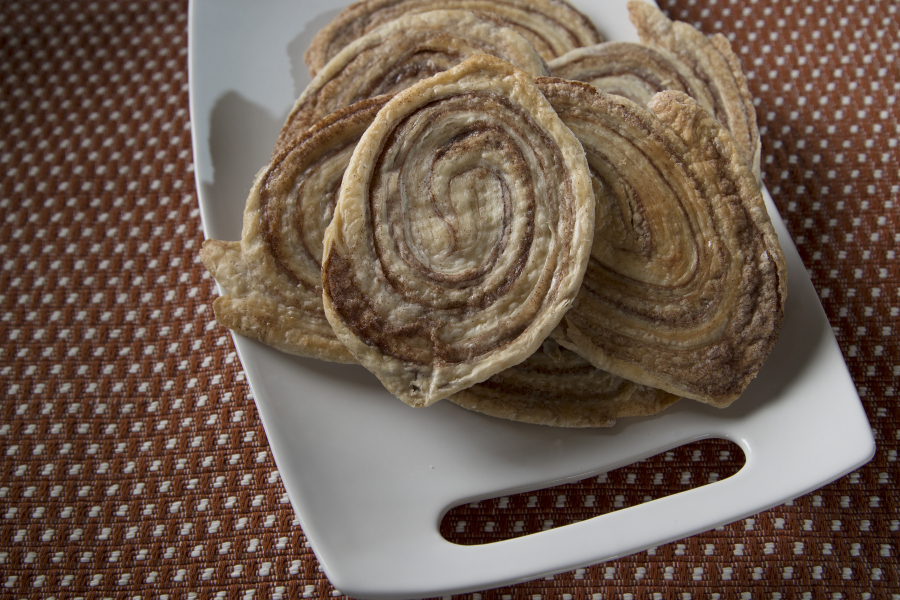Those familiar with making puff pastry may be confounded by this particular recipe’s technique of wrapping the dough within butter, instead of butter within dough. This actually was not Paul Hollywood being devilish, but a proper technique called feuilletage inverse, or “inverse puff pastry,” which yields especially light and airy results.
Watch Hollywood explaining the rationale behind this practice.
And now, there’s little more to say than, “Ready. Set. Bake!”
Arlettes
Makes 8.
Note: Adapted from “The Great British Baking Show.”
o For the dough
1/2 cup all-purpose flour, plus extra for dusting
1/2 cup bread flour
1 teaspoon salt
3 tablespoons unsalted butter, melted
1/4 cup cold water
For the butter layer
8 tablespoons (1 stick) unsalted butter, room temperature
1/4 cup all-purpose flour
1/4 cup bread flour
o For the filling
3 tablespoons sugar
2 teaspoons cinnamon
Powdered sugar for dusting, about 1/2 cup
In a small bowl, whisk 1/2 cup all-purpose flour, 1/2 cup bread flour and salt. Then add melted butter and 1/4 cup cold water. Form a dough, then use your hand to compress the mixture into a ball. Knead on a lightly floured surface until smooth, then pat into a 4-inch square. Wrap in plastic wrap and chill for an hour.
In the meantime, cut 1 stick butter into 8 pieces. Then with an electric mixer or pastry blender, combine with 1/4 cup all-purpose flour and 1/4 cup bread flour until the mixture resembles large crumbs. Use your hand to press the mixture together, then lay it on a 10-inch long piece of plastic wrap. Top with another piece of plastic wrap and, with a rolling pin and your hands, flatten the butter into a rectangle 4 inches wide and 8 inches long, keeping the edges straight and square. Chill for 25 minutes.
Unwrap the chilled butter layer (save the wrap) and place on a lightly floured surface. Run the rolling pin over it a few times to make it more pliable. Unwrap the chilled dough and place it in center of the butter. Gently fold the upper and lower flaps up over the dough so the edges meet in the middle. If the butter breaks a bit, just pinch it together.



